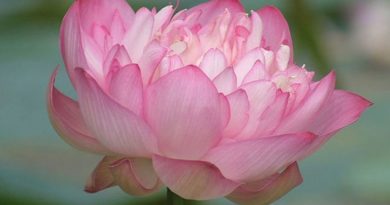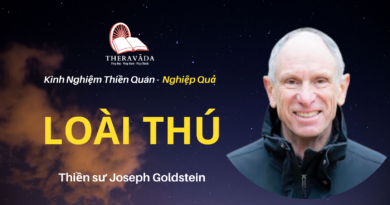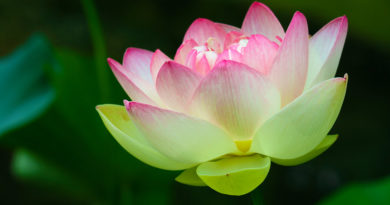VIPASSANA MEDITATION – APPENDIX ONE
MAIN CONTENT
VIPASSANA MEDITATION – APPENDIX ONE
Part 1 – Moral Conduct
Purification of moral conduct is a prerequisite for a meditator to achieve progress in his practice. Only then will he be free from a guilty conscience and be detached and able to concentrate easily. In a meditation retreat, the meditators are required to observe the eight precepts: –
- I undertake the precept to abstain from killing.
- I undertake the precept to abstain from taking things not given.
- I undertake the precept to abstain from incelibacy.
- I undertake the precept to abstain from false speech.
- I undertake the precept to abstain from taking distilled and fermented liquors and intoxicants.
- I undertake the precept to abstain from taking food at an improper time.
- I undertake the precept to abstain from dancing, singing, music and and unseemly shows, from the use of garlands, perfumes, and unguents, and from things that tend to beautify and adorn (the person).
- I undertake the precept to abstain from using high and luxurious seats and beds.
Part 2 – The Meaning Of Vipassana
If a yogi does not understand the purpose of Vipassana medication, he will not try to discover something by his noting of mental and physical processes.
Vipassana is a compound of two words: vi – and passana. Vi means various, i.e. the three characteristics (transiency, unsatisfactoriness, non self). Passana means right understanding or realization by means of mindfulness of mentality and physicality. Vipassana therefore means the direct realisation of the three characteristics of mentality and physicality.
Part 3 – Note Mindfully
Note attentively and precisely.
Superficial noting may make your mind more distracted.
Note the present, live in the present.
If you are looking for something while practising, the mind will be in the future.
The fundamental principle is to observe whatever arises at the very moment it arises.
Labelling is a friend of mindfulness when concentration is weak. If you do not label, you will tend to miss the object. Words are not essential but are sometimes helpful, especially in the beginning. Unless it becomes a hindrance, do not drop labelling.
It is important to note precisely every mental and physical process – which need to be realized in their true nature.
Part 4 – Sitting Meditation
When sitting the body of the meditator should be balanced.
Do not sit leaning against a wall or other support. This weakens right effort (samma vayama) and you will feel sleepy.
Sitting on raised and compressed cushions causes the body to bend forward. This will make you feel sleepy. Sariputta and Mogallana did not use any cushion to meditate.
Every sitting must be preceded by an hour of walking meditation (this may be reduced when not in retreat and the time available is limited).
When changing from walking to sitting practice, mindfulness and concentration should not be disrupted.
In the beginning of the practice, a beginner may be confused as to what to note. The Venerable Mahasi Sayadaw instructed that a yogi may start observing the rising and falling movement of the abdomen, mentally noting rising when observing the outward movement and falling when observing the inward movement.
This is in accordance with the chapter on the four elements in the Maha Satipatthana Sutta. The movement of the abdomen is vayo dhatu (wind element).
Each element has its individual or specific characteristics.
- The Earth element (pathavi dhatu) has hardness and softness as its specific characteristics.
- The water element (apo dhatu) has fluidity and cohesion as its specific characteristics.
- The Fire element (tejo dhatu) has heat and cold as its specific characteristics.
- The Wind element (vayo dhatu) has motion, support and vibration as its specific characteristics.
When one is mindful of and realizes the movement of the abdomen, then one can be said to rightly understand the real nature of the wind element and destroy the false view of a self.
In the beginning you may put your hand on the abdomen if you are unable to feel the movement otherwise.
Breathing must be normal. Do not take quick or deep breaths, you will get tired. Relax the mind and body as much as possible.
When the abdominal movements are more gradual and clear, you may increase the frequency of the noting: – “rising…rising…rising”, “falling…falling…falling”. If the movements are complicated, just note them generally.
Although the yogi is taught to begin with the watching of the rise and fall of the abdomen, he must not be attached to it. This is not the only object, but only one of the many varieties of objects of Vipassana meditation.
If sounds are heard, note hearing. At first it is not easy, but has to note as much as possible. Only when mindfulness is sufficient, may one return to the primary object of meditation (e.g. rising and falling). If there is a gap between rising and falling, fill it with the noting sitting and/or touching’.
- Do not open your eyes while sitting meditation. If you do, concentration is broken.
- Do not be contented with one hour sitting. Sit as long as you can.
- Do not shift your posture.
Part 5 – Walking Meditation
Take the walking meditation seriously. By merely doing walking meditation, one can reach Arahantship! Take the Venerable Subhadda the last Arahant disciple of the Buddha, as an example.
Bring your attention to the foot during walking meditation. Note the movement with sharp awareness. At the beginning, note the step in one part only, mentally note right and left.
Do not close your eyes but keep them half closed, looking ahead about four or five feet.
Do not bend the head too low. This will cause tension and dizziness in a short time. Do not look at your feet. Your mind will get distracted.
When you follow the movement of the foot, you must not lift the feet too high.
The objects to be noted are increased gradually, that is, the number of parts of a step that are observed is gradually increased.
Later one may watch the step in one part about ten minutes, followed by three parts lifting, pushing, lowering. Finally it may be further increased to: – intending, lifting, pushing, lowering, touching, pressing.
Please consider this – within one hour of walking meditation, the mind is sure to wander off quite a few times.
You must not look around here and there during walking meditation. You have had and will have many years to look around. If you do so during the retreat, you say good bye to concentration. Take note of the desire to look around. The wandering eye is a very difficult problem for a yogi.
At least five to six hours each of walking and sitting meditation per day is recommended
Part 6 – Mindfulness Of Daily Activities
Mindfulness Meditation is Buddhas way of life.
Awareness of daily activities is the life of a yogi. Once the yogi fails to observe an activity he loses his life. That is, he is not a yogi, because he is devoid of sati, samadhi and panna.
Be mindful of each and every daily activity.
If you cannot be mindful of daily activities, do not expect progress.
Not noting daily activities leads to wide gaps of non mindfulness. Continuity is needed to carry mindfulness forward from one moment to the next.
The faculty of mindfulness (satindriya) of a yogi involves constant and uninterrupted mindfulness for the whole day.
Constant and uninterupted mindfulness gives rise to deep concentration. Only with deep concentration can one realize the intrinsic nature of mental and physical phenomenon, which leads one to the cessation of dukkha.
There are many new things to discover everyday if you have constant and uninterrupted mindfulness.
During a retreat, all you have to do is to be mindful. You need not hurry.
The Venerable Mahasi Sayadaw compared a meditator to a sick person who moves about very slowly.
Doing things extremely slowly makes your mind concentrated . If you intend to achieve something in your meditation, you must get accustomed to slowing down.
When a fan is turning fast, you cannot see it as it really is. If it is turning slowly, then you can do so. So you will have to slow down to be able to see clearly the mental and physical processes as they really are.
When you are surrounded by people who are doing things in a rush, you must be oblivious to the surroundings and energetically note any mental or physical activity.
Talking is a greater danger to the progress of insight.
Five minutes talk can wreck a yogis concentration for the whole day.
Do not read, recite or recollect. They are hindrances to your meditation progress.
Part 7 – Pain And Patience
- Pain is the friend of a meditator, do not evade it, it can lead you toNibbana.
- Pain does not have to inform you of its coming. It may not disappear. If it does, you may cry over it, for your friends has gone away. Some yogis even induce pain by folding their legs beneath them.
- Pain is observed not to make it go away but to realise its true nature.
- Pain is the key of the door to Nibbana.
- When concentration is good, pain is not a problem. It is a natural process no different from rising – falling. If you observe it attentively, the mind will be absorbed in it and discover its true nature.
- When pain comes it is noted directly but ignored only if it becomes overly persistent. It can be overcome by deep concentration which is brought about by continuous mindfulness.
- If there is intense pain while walking, one should stop occasionally and take note of it.
Patience leads to Nibbana. Impatience leads to hell. Be patient with anything and and everything that stimulates your mind.
Who said anything is enjoyable?
Part 8 – Noting Mental And Emotional States
If you note any mental or emotional state, it must be done somewhat quickly, energetically and precisely, so that the noting mind id continuous and becomes powerful. The the thinking will stop by itself.
Note the thoughts quickly as if you are hitting them with a stick: – thinking, thinking, thinking … or sleepy, sleepy, sleepy … or happy, happy, happy … or sad, sad, sad …. not slowly as, thinking … thinking …or sleepy …sleepy ….
Unless you can note the wandering thought you do not have a ope of concentrating the mind. If your mind is still wandering it just means that you still do not note energetically enough. This ability is indispensable.
If you are aware of the content of the thought, it will tend to go on. If you are aware of the thought itself, then thinking will cease.
Do not be attached to thinking and theory.
Insight comes with deep concentration but logical or philosophical thinking comes with shallow concentration.
Eagerness and worry about getting concentration can cause distraction.
Drowsiness can be overcome by putting in more effort. Labelling activities to be noted also helps.
Curiosity and expectation definitely delay your progress. If they arise, do not dwell on them. Give them sharp awareness.
Note sleepiness energetically – by doing it in quick repetition.
If you want to achieve something in your meditation, you will have to put more effort into yogi practice.
Actually, the energy to note is always there. The trouble is you are reluctant to use it. The mental attitude is very important. Dont be pessimistic. If you are optimistic, you offer yourself opportunity. Then there is satisfaction in every situation and you will also have less distraction.
If a yogi wakes up at 3.00 a.m. he must get up to meditate. He should not wait until 4.00 a.m. That is not the right attitude.
If you are sleepy on waking up, get up and walk. Otherwise you will enjoy sleeping. (In the retreat, yogis were scheduled to wake up at 4.00 a.m.)
If you are sleepy, walk quickly backwards and forwards in the sun.
A human being has a great variety of strengths and the ability to do many things. We must STRIVE, not TRY!
If you put in enough effort, you can achieve the four paths and fruitions
One week of practice is just a learning process. Real practice begins only after that.
Meditation is beyond time and space. So do not be caught up by them.
Part 9 – The Five Faculties Of A Meditator
A meditator must have these five faculties strong, powerful, sharpened and balanced.
They are:
- Saddhindriya: firm and strong faith based on right understanding.
- Viriyindriya: Strong and strenuous effort in the practice.
- Satindriya: sustained and uninterrupted mindfulness.
- Samadhindriya: deep concentration.
- Pannindriya: penetrative wisdom, insight.
These faculties must be balanced to attain insight. Faith or confidence must be balanced with wisdom, energy with concentration. Mindfulness need not be balanced with any other factor. It is the most important faculty that leads the other four to their goal.
Interviews or Reporting Sessions
Daily, the yogi has to report to the meditation instructor to check on his practice. Having given a report of what he did and experienced during the days meditation, the instructor will correct, give further instruction or inspire him for further progress. As such, effective communication between them is of extreme importance.
In the retreat, different times were given to each group to report to the Sayadaw.
A yogi should not try to come in before their scheduled time unless he has reason to. On the other hand, it should not be a factor that hinders his meditation, he may come later than scheduled.
When waiting for your turn within the group do not waste time. Sit down and be mindful till called. The next one should get ready beside the one being interviewed.
Yogis should be considerate, especially when there are many other yogis waiting and time is precious. Be concise and to the point.
Do not get excited, nervous or afraid. Be composed and open. Speak clearly and audibly in complete sentences. Do not swallow your words, speak in a jumble or mutter.
Do not wait for remarks. Only after you have narrated all your experiences will any remarks be made.
Listen carefully to the instructions and follow them strictly and diligently. If in doubt, ask.
When asked a question, answer it; do not speak about something else.
Report experiences even though they may seem unimportant to you.
Taking short notes immediately after meditation is helpful but one should not make ita point to remember while meditating as this will disturb concentration.
Come and leave the reporting session mindfully.









